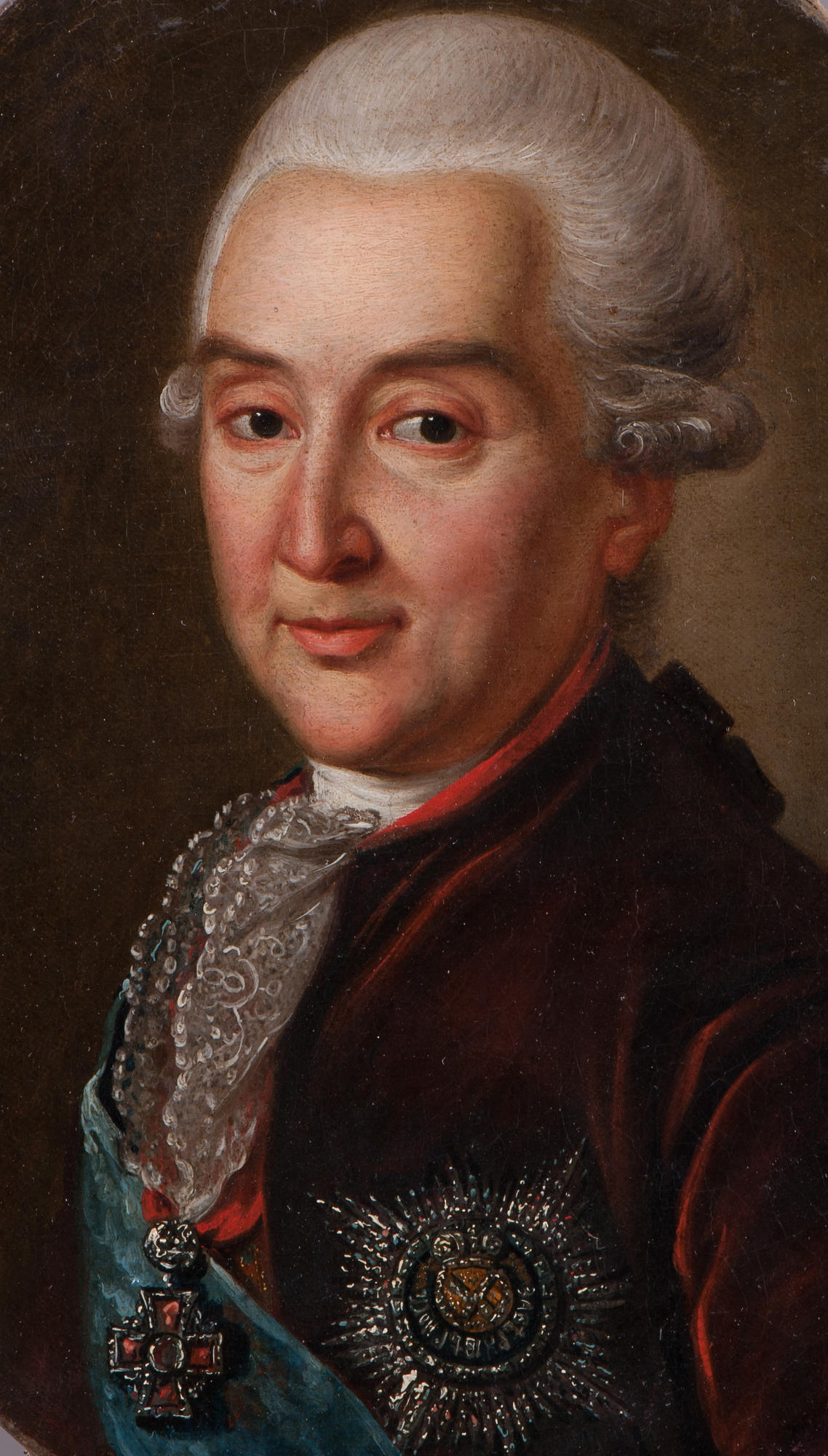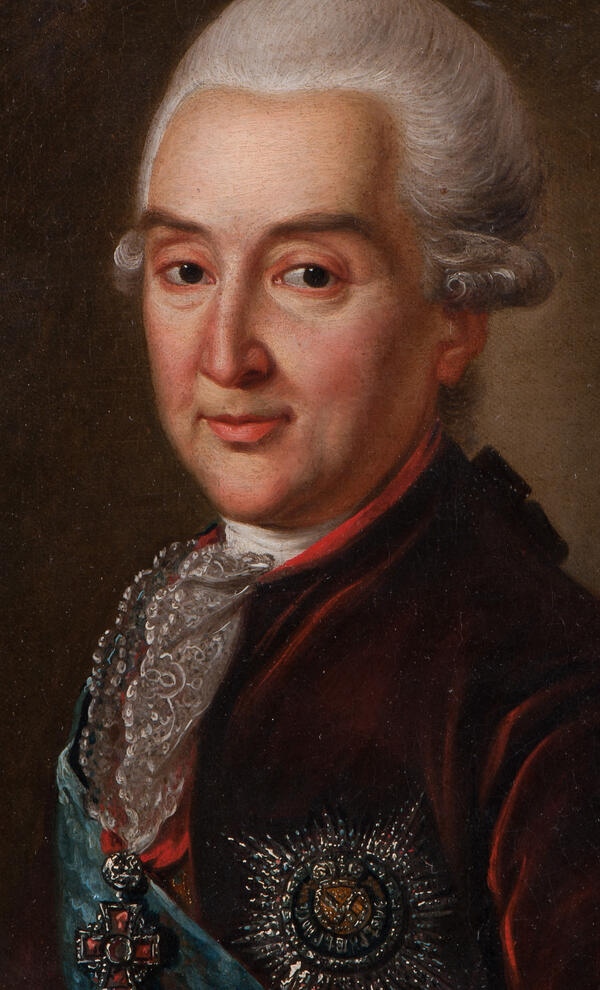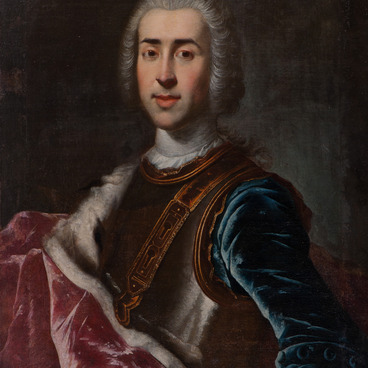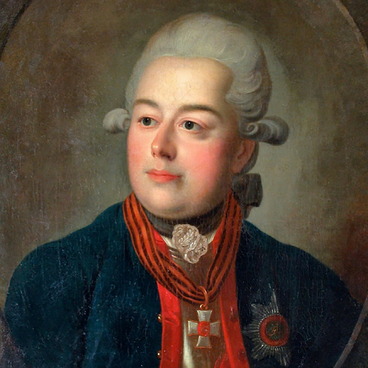Alexander Mikhailovich Golitsyn (1723-1807) was a representative of the younger ramage of the Golitsyn family. His oval portrait from the Zaraysk Kremlin collection is considered the best of the prince’s three lifetime portraits and is part of the Golitsyn family portrait gallery.
At court, Alexander Mikhailovich conducted mainly diplomatic activities: in 1742 he was ambassador to Holland, in 1749 he visited Paris with a brief unofficial mission, and in 1755-1761 he was as a delegate in London. From 1762 to 1775 he was vice-chancellor and vice-president of the College of Foreign Affairs. Despite his post, Golitsyn did not enjoy the favor of either the Empress or his contemporaries. In fact, he made no decisions, and the real head of Russian foreign policy at that time was Count Nikita Panin.
After retiring in 1778, the prince engaged in philanthropy - he built hospitals in Moscow. In addition, Alexander Golitsyn was an enthusiastic collector. He formed his collection for many years. It included paintings and sculptures, many of which were donated by his cousin Dmitry Mikhailovich Golitsyn. Deciding that his collection would be useful to the fatherland and not wishing to share the collection, Golitsyn bequeathed it to the Golitsyn hospital. After the death of the count, his nephew completed the building of the art gallery, which was located right on the hospital’s territory. The gallery was open to the public, which was then a novelty for Russia. And within the walls of the Moscow house of Golitsyn on Devichye Pole there was a family collection of portraits which was not intended for public eyes.
Nothing is known about the artist who made a copy from the pastel work of Johann Bardou except the name and canvas’ creation date. Perhaps he was the serf of the Golitsyns, who left an inscription on the stretcher “Created by Savelya…”
Golitsyn is depicted in his middle age, but his proud posture has been preserved. Brown eyes cleverly and ironically look at the viewer, a slight smile flickers at his lips. The prince is dressed in a dark red velvet caftan with the insignia of the highest Russian orders of St. Andrew the First-Called and St. Alexander Nevsky.
The portrait came to the museum collection from Count Keller’s Sennitsa estate in Zaraysk district, Ryazan province in the 1920s.
At court, Alexander Mikhailovich conducted mainly diplomatic activities: in 1742 he was ambassador to Holland, in 1749 he visited Paris with a brief unofficial mission, and in 1755-1761 he was as a delegate in London. From 1762 to 1775 he was vice-chancellor and vice-president of the College of Foreign Affairs. Despite his post, Golitsyn did not enjoy the favor of either the Empress or his contemporaries. In fact, he made no decisions, and the real head of Russian foreign policy at that time was Count Nikita Panin.
After retiring in 1778, the prince engaged in philanthropy - he built hospitals in Moscow. In addition, Alexander Golitsyn was an enthusiastic collector. He formed his collection for many years. It included paintings and sculptures, many of which were donated by his cousin Dmitry Mikhailovich Golitsyn. Deciding that his collection would be useful to the fatherland and not wishing to share the collection, Golitsyn bequeathed it to the Golitsyn hospital. After the death of the count, his nephew completed the building of the art gallery, which was located right on the hospital’s territory. The gallery was open to the public, which was then a novelty for Russia. And within the walls of the Moscow house of Golitsyn on Devichye Pole there was a family collection of portraits which was not intended for public eyes.
Nothing is known about the artist who made a copy from the pastel work of Johann Bardou except the name and canvas’ creation date. Perhaps he was the serf of the Golitsyns, who left an inscription on the stretcher “Created by Savelya…”
Golitsyn is depicted in his middle age, but his proud posture has been preserved. Brown eyes cleverly and ironically look at the viewer, a slight smile flickers at his lips. The prince is dressed in a dark red velvet caftan with the insignia of the highest Russian orders of St. Andrew the First-Called and St. Alexander Nevsky.
The portrait came to the museum collection from Count Keller’s Sennitsa estate in Zaraysk district, Ryazan province in the 1920s.



